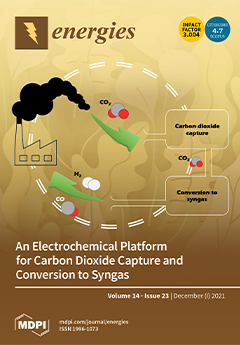This study investigated the effect of HCl in biomass gasification producer gas on the CO
2 capture efficiency and contaminants removal efficiency by CaO-Fe
2O
3 based sorbent material in the calcium looping process. Experiments were conducted in a fixed bed reactor
[...] Read more.
This study investigated the effect of HCl in biomass gasification producer gas on the CO
2 capture efficiency and contaminants removal efficiency by CaO-Fe
2O
3 based sorbent material in the calcium looping process. Experiments were conducted in a fixed bed reactor to capture CO
2 from the producer gas with the combined contaminants of HCl at 200 ppmv, H
2S at 230 ppmv, and NH
3 at 2300 ppmv. The results show that with presence of HCl in the feeding gas, sorbent reactivity for CO
2 capture and contaminants removal was enhanced. The maximum CO
2 capture was achieved at carbonation temperatures of 680 °C, with efficiencies of 93%, 92%, and 87%, respectively, for three carbonation-calcination cycles. At this carbonation temperature, the average contaminant removal efficiencies were 92.7% for HCl, 99% for NH
3, and 94.7% for H
2S. The outlet contaminant concentrations during the calcination process were also examined which is useful for CO
2 reuse. The pore structure change of the used sorbent material suggests that the HCl in the feeding gas contributes to high CO
2 capture efficiency and contaminants removal simultaneously.
Full article





